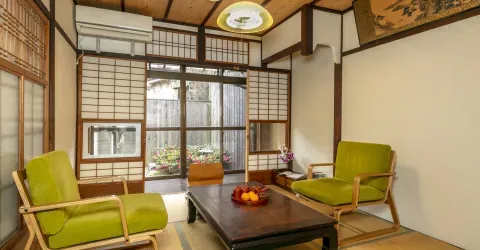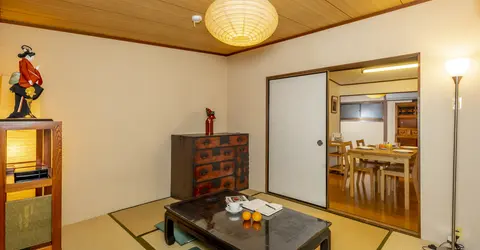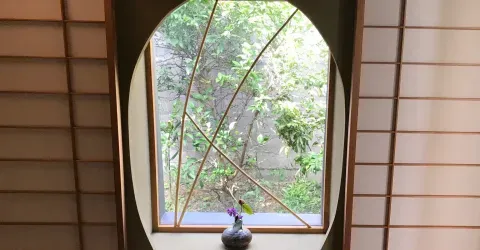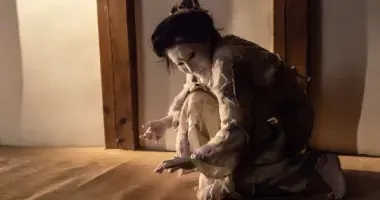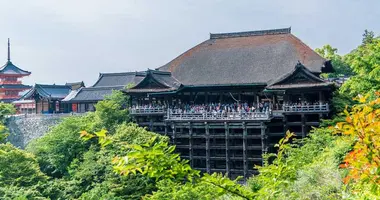Fukuchiyama Guide: Discovering the Hidden Gem of Kyoto Prefecture
- Published on : 12/05/2024
- by : Japan Experience
- Youtube
Nestled in the northwestern part of Kyoto Prefecture, Fukuchiyama is a peaceful castle town with a rich history and unique charm. Just over an hour by train from Kyoto, this hidden gem offers visitors a tranquil escape from the bustling tourist spots. With its historic castle, beautiful natural surroundings, and vibrant local culture, Fukuchiyama provides a perfect blend of traditional Japan and small-town warmth. Whether you're interested in exploring ancient samurai legacies, enjoying scenic landscapes, or immersing yourself in local festivals, Fukuchiyama has something for everyone. Let's embark on a journey to uncover the treasures of this often-overlooked destination in the heart of Japan.
Introduction to Fukuchiyama: A City Steeped in History and Culture
Fukuchiyama, the second oldest city in Kyoto Prefecture, boasts a population of around 80,000 residents. This charming locale offers a more relaxed lifestyle compared to its bustling neighbor, Kyoto. The city's rich history is evident in its well-preserved districts, particularly the Shimoyanagimachi and Teramachi areas, where visitors can still glimpse buildings and shops dating back to the 19th century.
The city's strategic location made it a vital transportation hub since ancient times. During the Heian period, the Fukuchiyama basin was developed into several shōen (landed estates) by Kyoto's Five Regent Houses. Later, in the Sengoku period, the area came under the control of Akechi Mitsuhide, a key figure in Japanese history, who developed the castle town around Fukuchiyama Castle.
Today, Fukuchiyama seamlessly blends its historical legacy with modern amenities, offering visitors a unique glimpse into Japan's past while providing all the comforts of a contemporary city. From its castle to its traditional festivals, Fukuchiyama invites travelers to experience a side of Japan often overlooked by mainstream tourism.
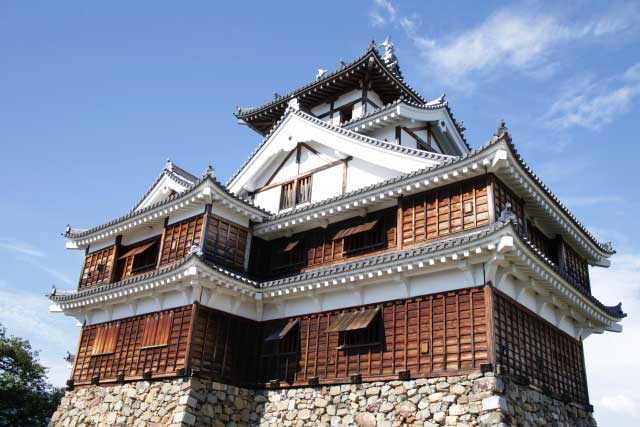
Exploring Fukuchiyama Castle: The Legacy of Akechi Mitsuhide
Fukuchiyama Castle, the city's crown jewel, stands as a testament to the area's rich samurai history. Originally built by the Yokoyama family, the castle was reconstructed by Akechi Mitsuhide in 1580 using advanced castle-building techniques of the time. Mitsuhide, a general in the army of Oda Nobunaga, is infamous for his role in Nobunaga's death at Honnoji Temple in Kyoto.
After the Battle of Sekigahara in 1600, the castle underwent renovations before being dismantled during the Meiji Period in 1872. However, thanks to the efforts of local residents, the castle keep was painstakingly reconstructed in 1986. Today, it serves as a local history museum, offering visitors insights into Fukuchiyama's past.
One of the castle's unique features is the Toyoiwa-no-I well, the deepest castle well in Japan. From the castle grounds, visitors can enjoy panoramic views of the Yura River and the surrounding city. The nearby Sato Taisei Memorial Museum, dedicated to the Japanese painter, houses many of his works alongside exhibits on local Tamba area history and crafts.
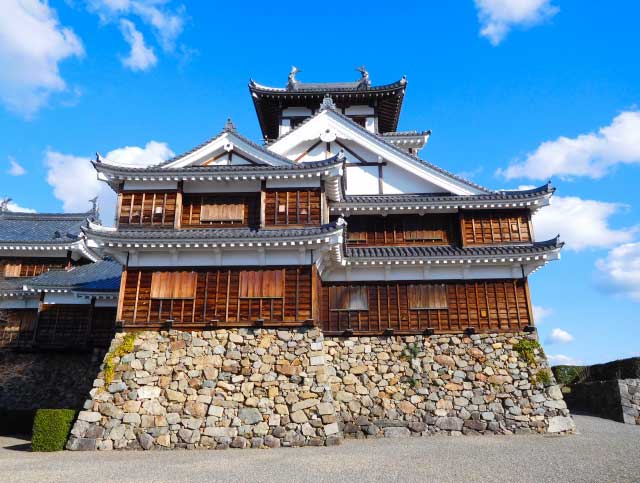
Fukuchiyama Castle, Kyoto Prefecture
Annual Events and Seasonal Attractions in Fukuchiyama
Fukuchiyama's calendar is dotted with vibrant events and festivals that showcase the city's rich culture and community spirit. The Fukuchiyama Castle Festival, held annually on April 9th and 10th, is a highlight that commemorates the reconstruction of the castle tower. This lively event features local Fukuchiyama food, stage shows, and parades, offering visitors a chance to immerse themselves in the local culture.
For nature enthusiasts, the autumn foliage at Choanji Temple, also known as Momiji (maple) temple, is a must-see. The temple grounds transform into a canvas of vibrant reds and golds, providing a picturesque setting for autumn walks and photography.
Another unique event is the Dokkoise Festival, which features a traditional dance procession. This inclusive festival welcomes participants from all walks of life, including government offices, companies, and local residents' associations. The Dokkoise Children's Festival, held in conjunction, ensures that even the youngest members of the community can partake in the festivities.
Family-Friendly Attractions: Fukuchiyama City Zoo and Sandanike Park
Fukuchiyama offers several attractions that cater to families and animal lovers. The Fukuchiyama City Zoo, the only zoo in Northern Kansai, is a popular destination known for its unique residents. The star attractions are Miwa, the piggyback-riding macaque, and Uribo, the boar, whose unlikely friendship has captured the hearts of visitors. The zoo is also home to various other species, including Grey Kangaroos, Humboldt Penguins, and Orang-utans.
The zoo is part of the larger Sandanike Park Recreation Area, which offers a range of family-friendly facilities. Visitors can explore the science museum, enjoy shows at the planetarium, or simply relax by the beautiful lake and gardens. The park provides a perfect setting for a day out, combining education, entertainment, and natural beauty.
Both the zoo and the park are accessible and budget-friendly. The zoo is open from 9am to 5pm all year, except Wednesdays (or Thursdays if Wednesday is a public holiday). Admission is very affordable at 210 yen for adults and high school students, and 100 yen for children.
Uncovering Fukuchiyama's Historical Districts: Shimoyanagimachi and Teramachi
To truly appreciate Fukuchiyama's historical charm, a stroll through its well-preserved districts is a must. The Shimoyanagimachi and Teramachi areas offer a glimpse into the city's past, with many buildings and shops dating back to the 19th century. These districts showcase the architectural styles and urban planning of the Edo and Meiji periods, allowing visitors to step back in time as they explore the narrow streets and traditional storefronts.
In Shimoyanagimachi, you'll find a mix of old merchant houses and small shops that have been in business for generations. Many of these establishments still retain their original facades, giving the area an authentic, old-world feel. The district is particularly known for its traditional crafts and local specialties, making it an ideal place to shop for unique souvenirs.
Teramachi, as its name suggests ("tera" meaning temple), is home to several historic temples. This area offers a more serene atmosphere, with quiet lanes leading to centuries-old religious sites. The temples here not only serve as places of worship but also as repositories of local history and art.
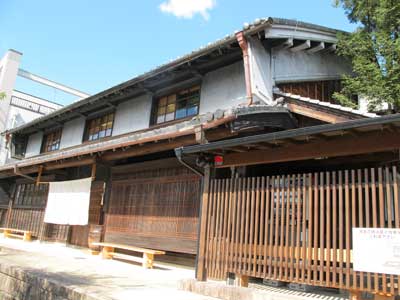
Fukuchiyama Otemon shop, Fukuchiyama
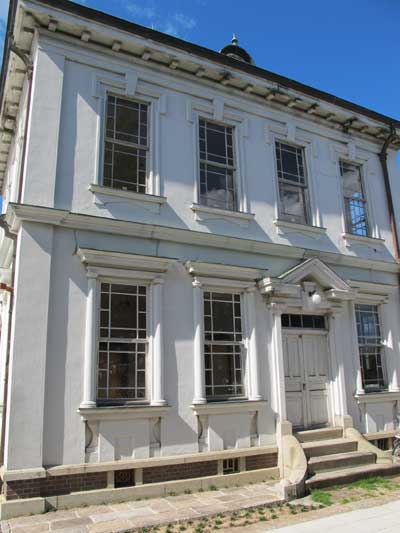
Western-style house, Fukuchiyama
Transportation and Accessibility: Getting to and Around Fukuchiyama
Despite its off-the-beaten-path appeal, Fukuchiyama is surprisingly accessible from major cities in the Kansai region. The city is well-connected by rail, making it easy for travelers to include in their itineraries.
From Kyoto Station, take the JR Hashidate limited express train directly to Fukuchiyama Station. The journey takes about 1 hour and 20 minutes and costs between 4800-5400 yen one way, depending on the day of travel. Alternatively, you can take the JR Kinosaki limited express train from Kyoto to Fukuchiyama (75 minutes, about 3050-3650 yen) and change to the Kyoto Tango Railway for the final leg of the journey.
From Osaka, the trip takes about 1 hour and 30 minutes on the Tango Explorer or Monju/Kitakinki Limited Express. JR Pass holders can use these trains for free, making Fukuchiyama an economical day trip option.
Once in Fukuchiyama, many of the city's attractions are within walking distance of the station or easily accessible by local buses. The Tourist Information Office, located just outside the north exit of Fukuchiyama Station, provides maps and information to help you navigate the city.
Day Trips from Fukuchiyama: Exploring Amanohashidate and Ine Bay
Fukuchiyama's strategic location makes it an excellent base for exploring other attractions in the northern Kyoto Prefecture. Two noteworthy destinations for day trips are Amanohashidate and Ine Bay.
Amanohashidate, one of Japan's three most scenic views, is easily accessible from Fukuchiyama. This stunning sand bar, stretching across Miyazu Bay, is lined with thousands of pine trees, creating a breathtaking landscape. Visitors can take a short train ride on the Kyoto Tango Railway from Fukuchiyama to reach this natural wonder.
Ine Bay, famous for its unique funaya (boat houses) that line the water's edge, offers a glimpse into a traditional fishing village lifestyle. These distinctive houses, with boat garages on the first floor and living quarters above, create a picturesque scene that has been featured in many movies and TV dramas. Ine can be reached by bus from Amanohashidate, making it possible to visit both locations in a single day trip from Fukuchiyama.
These day trips allow visitors to experience the diverse beauty of Kyoto Prefecture's coast, from its natural wonders to its preserved traditional lifestyles, all while using Fukuchiyama as a comfortable and convenient home base.
